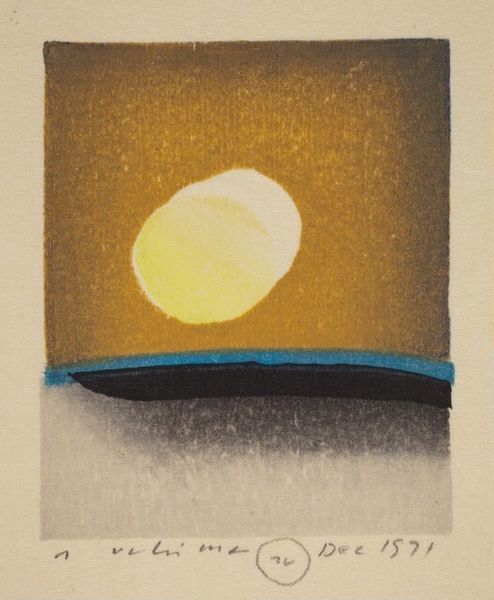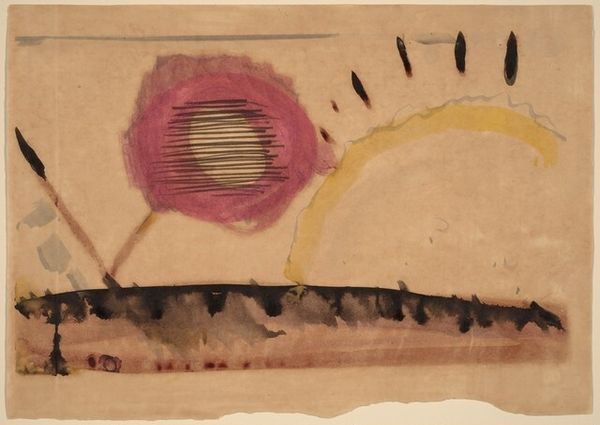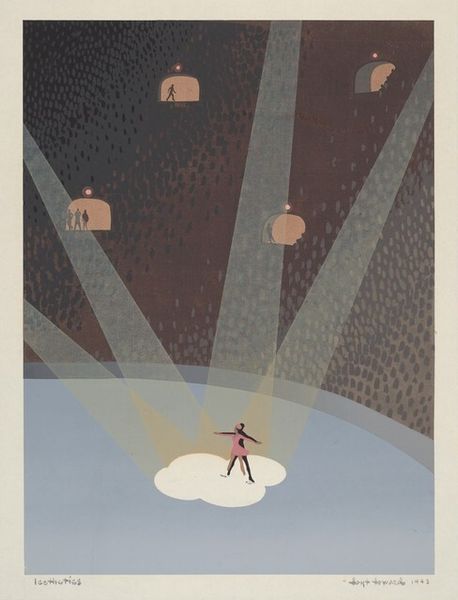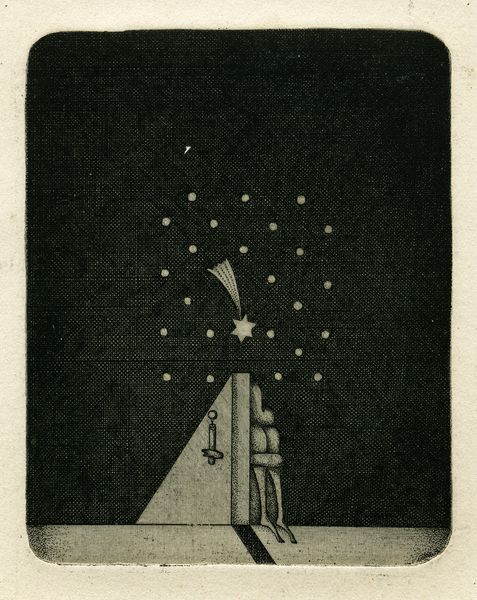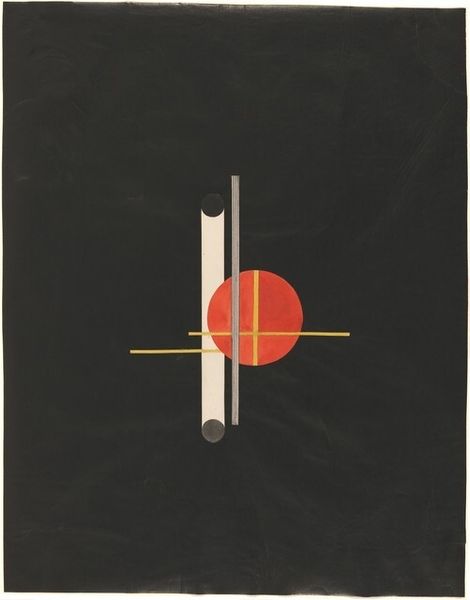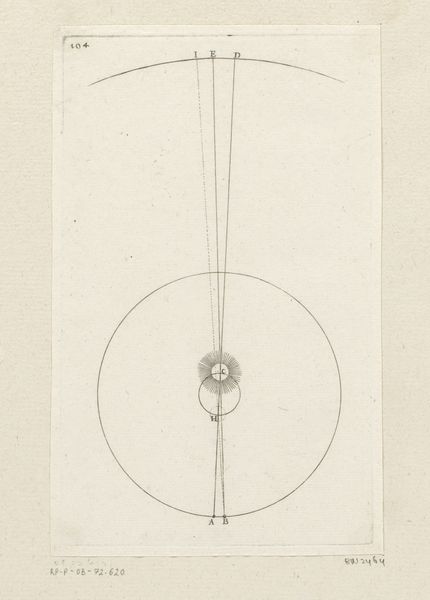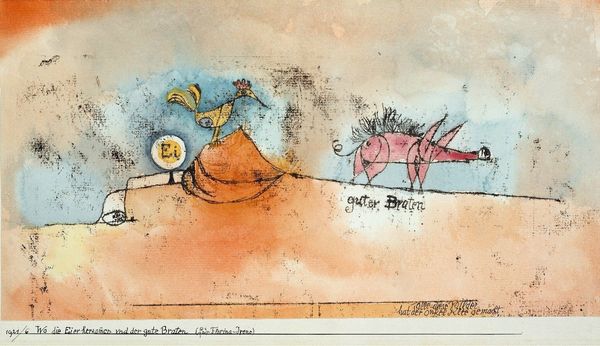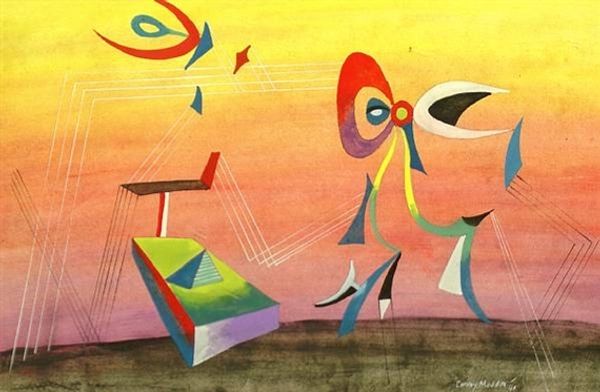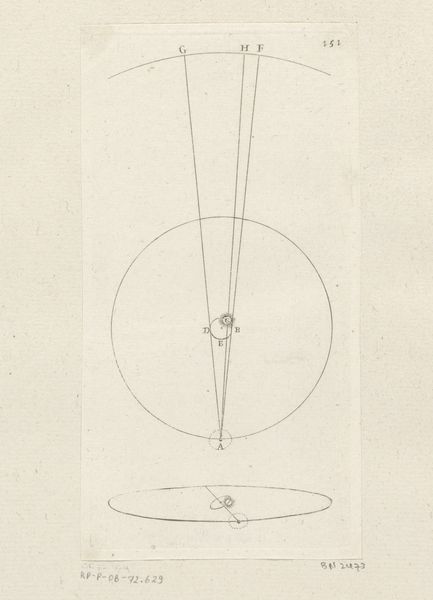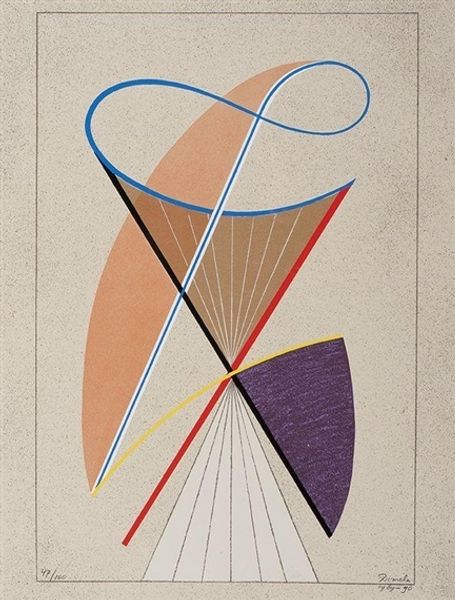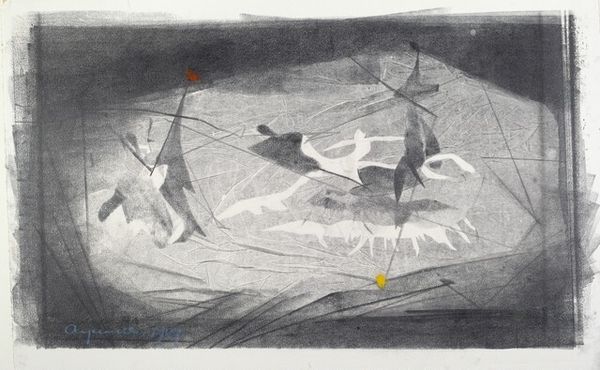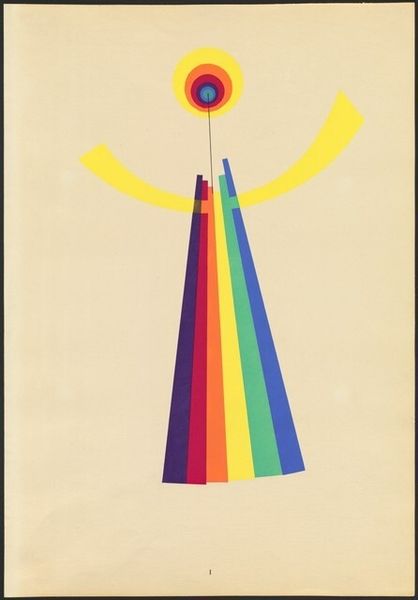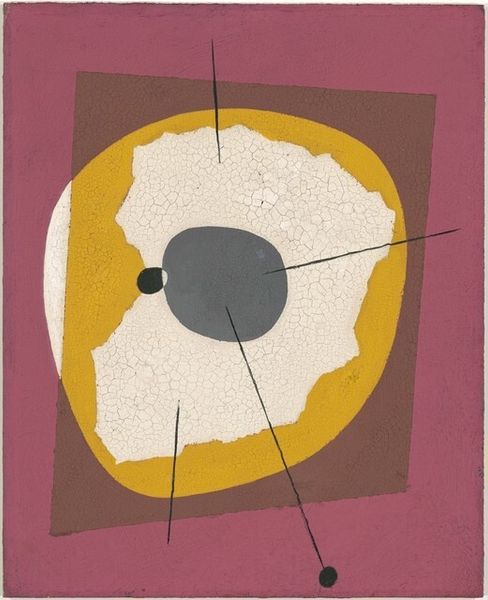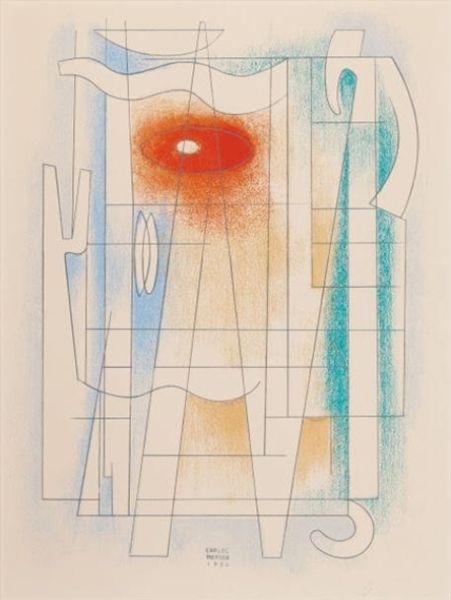
Copyright: Public domain
Editor: So, here we have Kandinsky's "Strahlen" from 1929. It's ink and watercolor on paper, and there's this fascinating tension between geometric shapes and these radiating lines, creating a rather ambiguous space. What do you make of it? Curator: Well, considering Kandinsky’s historical context, specifically the Bauhaus, we must view it as an output of that factory: examining his materials – ink, watercolor, paper – the modes of their combination, can give us some answers. Do you see it like that as well? Editor: I can definitely see that influence. How would analyzing these materials get us further along? Curator: Look at the industrial availability and the properties of these materials, particularly paper as a base for experimentations in printing and design that were central to Bauhaus philosophy. Then there’s the ink – was it mass-produced? How easily available was that type of pigment? These aren't merely artistic choices. Editor: Interesting...it shifts my understanding to think of it as less about pure self-expression and more about engaging with available resources of that time. Curator: Precisely! It reframes the "artwork" as a record of this relationship between artist and resources, almost a social artifact rather than solely an aesthetic achievement. The ease of manipulating watercolors for tonal variation. How would that play in relation to creating several almost serial works on paper? What about challenging notions of authorship with new media? Editor: That's a complete turnaround for me. I was initially focused on composition and now I'm contemplating resource constraints and production. Curator: See the artistic gesture in relation to its historical, material, and productive circumstances! Editor: Okay, I'll definitely look at art through the lens of its production more often now. Thanks.
Comments
No comments
Be the first to comment and join the conversation on the ultimate creative platform.
